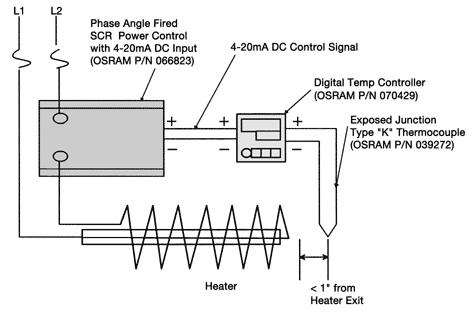|
Using an Air Heater If used properly, heater life of 5000 hours or greater can be expected. To ensure long heater life and safe operation, follow these guidelines. Also read and understand your heater Operating Manual before use. Failure to follow these guidelines can result in heater damage, failure, or personal injury. Air Sources Regenerative blowers When designing your heating system, you should try to minimize air restrictions, and select a blower sufficient to overcome the backpressure generated by the heater, flare, and associated piping. Because of their small size, the Series, Hot Air Tool, and Serpentine II heaters should not be used with regenerative blowers. Compressed Air When measuring compressed air flow rates, be sure you are measuring Standard CFM or Standard LPM units. The "Standard" means that the units are measured at standard temperature and pressure. Many flow meters are labeled SCFM, but this is incorrect at the higher pressures produced by compressed air. For accurate flow measurements, you must consult your flow meter manual for converting CFM to "Standard" CFM. In the diagram below, the flow meter reading (CFM) is converted to SCFM using a Dwyer ball-type flow meter conversion.
Controls A good control system is critical for long heater life. Before turning your control system on, you must have sufficient airflow through the heater before applying power. (Applies to heaters without SureHeat or Hot Air System over-temperature protection.) Only qualified individuals should install Osram Sylvania heaters and controls. Follow all applicable electrical codes and use proper wiring. Open-Loop (Manual) Control Closed-Loop (Feedback) Control Power Controller Other power controls may be suitable, such as distributive zero cross SSR (Solid State Relays) or other fast-switching SSR’s, but you should contact Osram Sylvania for approval before use. Temperature Controller A standard PID-type control with a wide proportional band setting will work best to minimize temperature overshoot. PID parameters may be auto-tuned, but only at temperatures well below the maximum of the heater. If the temperature rises too high during auto-tune, turn power off immediately. When using a Solid State Relay power control, the temperature controller cycle time should be set for 100ms or less. Thermocouple
|
We've seen your application. Call Us for application Assistance




